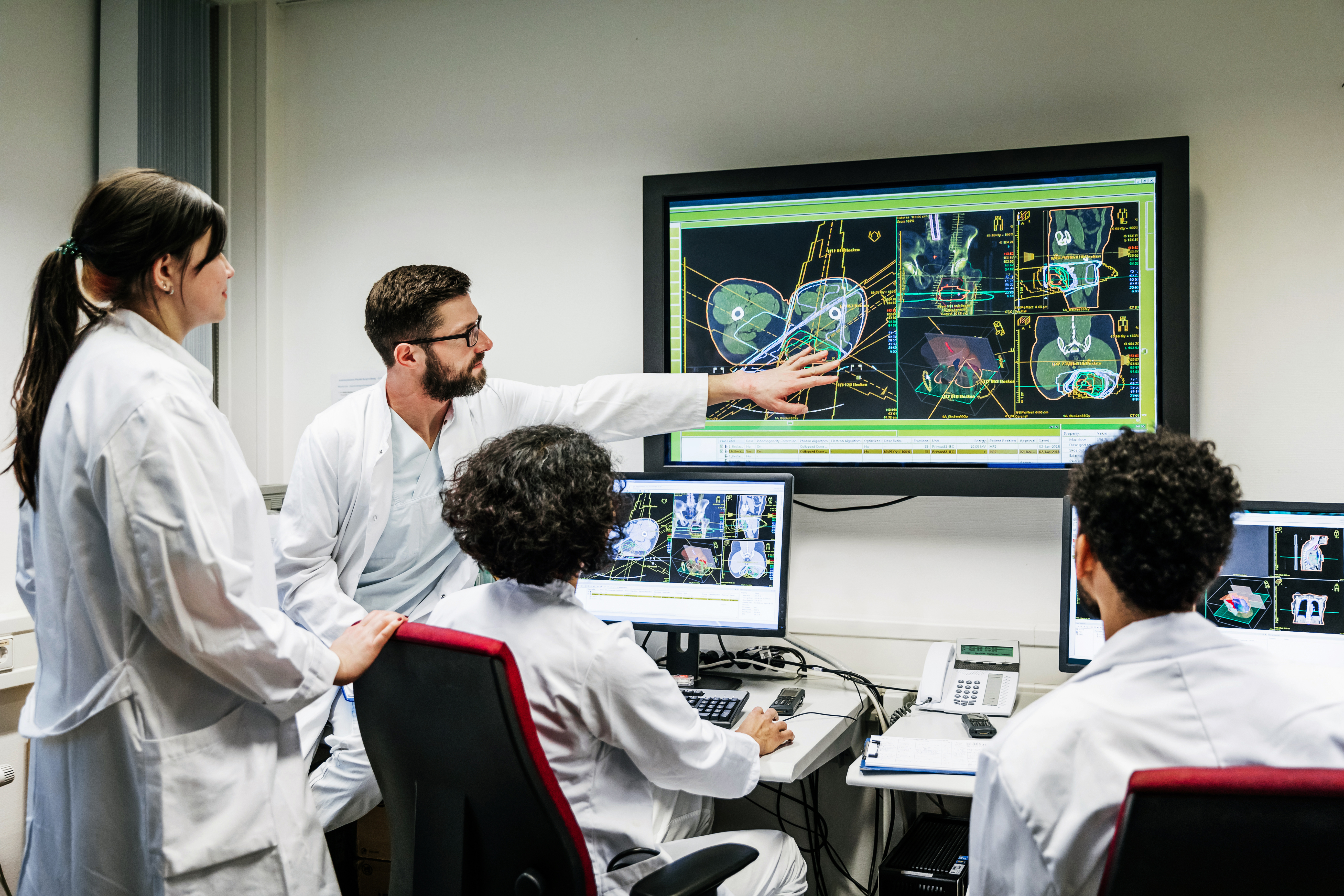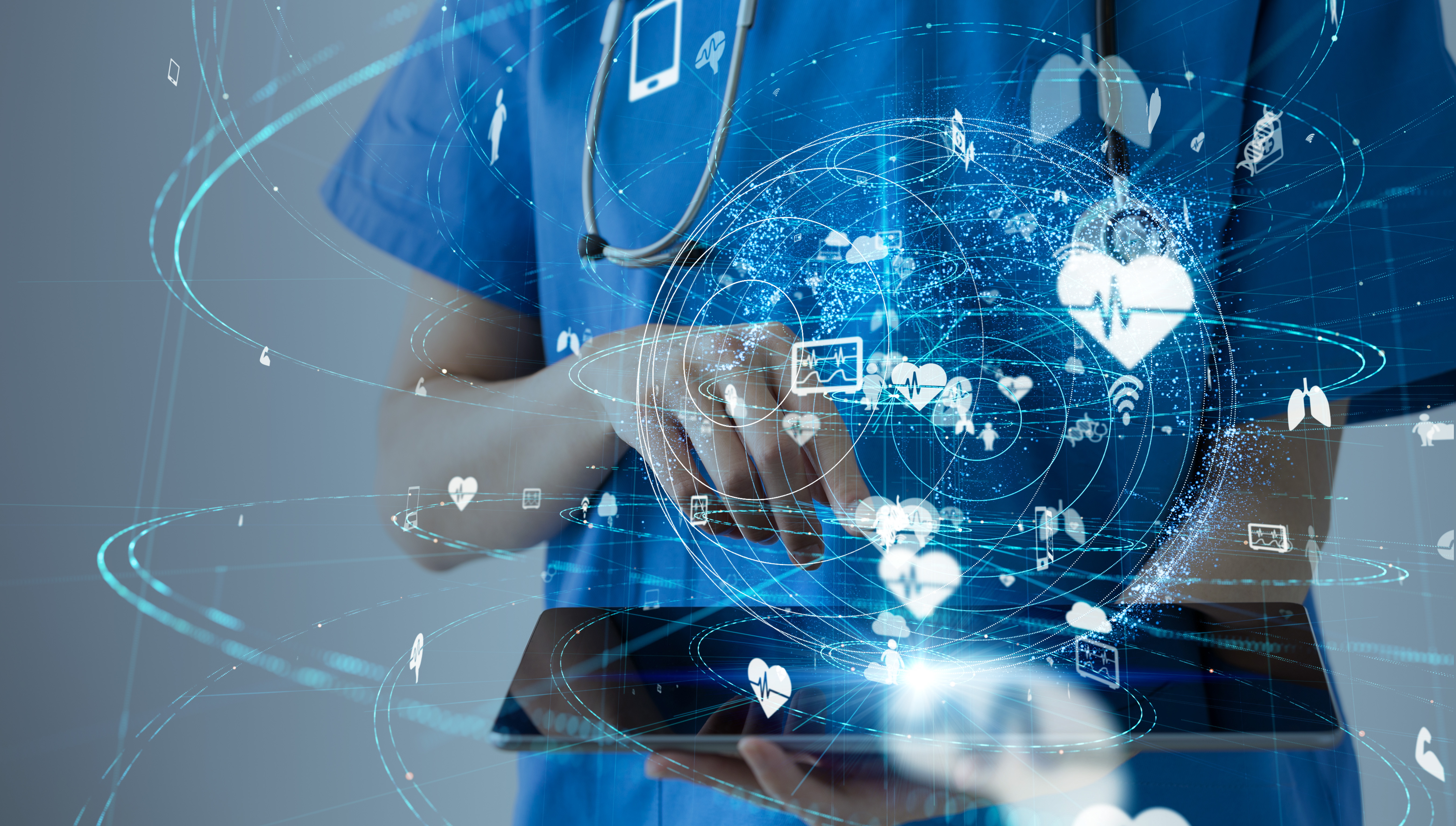5G’s Role in Improving Quality and Reach of Healthcare
The speed and low latency offered by 5G is changing the ways in which medical professionals provide care. From remote surgeries assisted by experts miles away to home-based healthcare powered by technology, a stable 5G connection helps to ensure reliable communication in situations where it counts the most.
In the world of healthcare, new technologies aren’t just about being on the cutting edge of the latest trend. It’s about how technology can improve care and expand the reach of quality care through unprecedented methods. The latest 5G technologies, an increase in IoT devices, and the right network architecture create a perfect innovation combination for today’s healthcare sector. With faster speeds and more connected devices, healthcare professionals will be able to improve – and some already are improving – both quality and reach of care.
5G and Healthcare
Many in the healthcare industry are quite aware of what 5G can do when paired with the right healthcare use case. In 2019, surgeons performed the first 5G-enabled remote surgery in China from a distance of 30 miles away. At the 2019 Mobile World Congress, surgeon Antonio de Lacy remotely assisted another team of surgeons and anesthetists who were performing surgery on a patient at Barcelona’s Hospital Clínic. The surgeon directing the operation indicated on his tablet the areas to be cut amid other recommendations, such as the precise place to act, on moving images obtained through a laparoscopic camera. At the same time, the surgical team displayed an image of the procedure on a screen near the operating table. 5G technology played a starring role in bringing new capabilities to the healthcare world.
According to research, the global 5G technology market could expand to $128 billion by 2026. These projections could indicate an expansion of 5G technology to regions previously unreached. For the healthcare industry, this could prove vital because it will allow surgeries, like those performed at the Mobile World Congress, along with high-level surgeons to reach areas that previously wouldn’t have access to premium care.
But what is it about 5G technology specifically, as opposed to Wi-Fi or LTE, that makes it qualified to improve the quality and reach of care? 5G provides a low-latency connection and increased bandwidth that is essential to applications that are enabling remote healthcare. Interruptions in a procedure can cause complications for the patient, reduce the quality of care, and in the worst-case scenario, put lives at risk. 5G technology can minimize those interruptions.
IoT and Healthcare
The speed and low latency 5G provides are also important with the recent rise in IoT devices within the healthcare sector. Recent data, projected the IoT in the healthcare market will grow from $127 billion in 2023 to 289.2 billion by 2030. This means the number of healthcare professionals, facilities and patients depending on IoT devices will only increase and will need networks with the capacity to support them.
Connected medical devices such as heart rate monitors, pulse oximeters, and glucose monitors allow healthcare professionals to track analytics so they can determine a patient’s condition and rapidly determine the proper next steps. Wearable sensors that track movement and pain during telehealth physical therapy will also play an increasing role as the IoT healthcare market expands. Other IoT healthcare applications can include things like automatic temperature checks and the ability to track visitors to a healthcare facility. This helps staff save time from manual checks, which can be an asset in mitigating overworked staff and preventing burnout.
If these devices are running on a 5G network, there would be minimal interruption in the communication between patient devices and the doctors who need to evaluate the patient’s condition. This could be crucial for some patients who find it hard to leave their homes and visit the doctor on a regular basis. With the help of 5G, they could still receive quality remote care and a patient experience that accommodates their current mobility.
The potential of private 5G in healthcare
With all the available advantages of 5G technology, combined with a growing dependence on IoT devices, there are many cases where healthcare institutions will need to have as much control as possible over their networks.
If you walk through a healthcare organization today and look up, you will see Wi-Fi radio access points dotting the hallways. The more IoT devices being added to provide healthcare monitoring, the more bandwidth on the LAN is required. However, Wi-Fi has its limitations in these environments where so many devices are competing for network bandwidth.
Using radio frequencies to send signals between access points, Wi-Fi is considered a “best effort” connection. However, its Wi-Fi is readily available, and users on a Wi-Fi network are vying for priority, with no guarantee of speed or quality of data delivery. For example, if one user attempts to stream X-rays over a Wi-Fi connection, their activity can impede the ability of other users to complete data-heavy tasks, which can cause operational problems. Wi-Fi also is prone to interference, so adding more access points to support additional IoT devices makes the connection even more unreliable.
In addition to its unreliable nature, Wi-Fi typically only employs a username and password for security vs. the layers of security policies that can be enabled through a PCN. The limited security measures often associated with Wi-Fi can lead to detrimental security breaches. For healthcare facilities, the best path to this control could come through a private cellular network. A private cellular network is an enterprise-owned network – in this case, the owner is a hospital or healthcare system – that combines the control and fixed costs of Wi-Fi with the flexibility, security and macro network benefits of a cellular network.
On a private 5G network, healthcare providers and hospitals would be able to leverage a secure private network with the low latency and higher bandwidth that 5G offers. This is important for a few reasons. With a private 5G network, organizations could also have more control over which data takes priority and needs to be transported over a network with low latency. For example, a hospital may decide that they need real-time imaging to travel through the private 5G network so they can more quickly diagnose a patient and begin treatment as soon as possible. Just as importantly, within a private 5G network, healthcare organizations could more readily ensure that private patient data remains private, as is required for HIPAA compliance. Private 5G has a host of security measures built into the cellular network.
For example, devices must have the correct physical SIM card or eSIM to access the private 5G network. This mitigates the risk of traditional credential-based attacks. Also, user and SIM configuration on the private 5G network makes it possible to separate data processing and storage from the mobile network. Further, with the right private 5G solution, healthcare facility IT personnel can customize security policies that will establish rules for when and where certain devices can be online.
In addition to security and network reliability, private 5G could also extend the surface area of care that healthcare organizations could provide. Also, within this private 5G pop-up network healthcare providers could ensure that security is segmented off a public network to ensure patient data meets HIPAA compliance. Dedicated network slices using SD-WAN could ensure that the data remains compliant if it has to cross to a public carrier network.
5G and Emergency Healthcare
While 5G plays a role at fixed healthcare locations and for patients who are receiving care at home, it also has a role to play for EMS vehicles that are responding to emergency situations, transporting patients to the hospital and communicating with healthcare organizations in high-stress situations. EMS vehicles must ensure they have resilient coverage as they move from an emergency site to a hospital, fast download speeds as they access patient data, and minimal interruptions as they communicate patient status/information to the hospital.
For example, a hospital would be able to create specified bandwidth so paramedics could seamlessly communicate with healthcare personnel right until the patient is in the emergency room. This could include video calls to discuss the patient’s condition, real-time data transfer from diagnostic technology on the vehicle and even remote procedures with the emergency physician remotely guiding the procedure.
Empowering quality healthcare
The use of wireless technology makes our healthcare system more efficient, helping to shorten distances between professionals and patients and reducing the saturation of healthcare services. This will help ease the daily burden on healthcare professionals while also increasing the ways in which they can care for their patients. As 5G technology grows, the hope is that we see even more use cases for IoT devices and private networks to increase the quality of care.
Robin Manke-Cassidy is a Product and Solution marketing leader at Cradlepoint. She joined Cradlepoint after holding a variety of roles within Product Management and Marketing in the Mobile, Network and client space. Previously, she spent two decades in Enterprise IT management with roles including access, security, data center server management, development and networking.
This article was written by Robin Manke-Cassidy, Solution Marketing at Cradlepoint and Director from HIT Consultant and was legally licensed through the DiveMarketplace by Industry Dive. Please direct all licensing questions to legal@industrydive.com.
![]()


